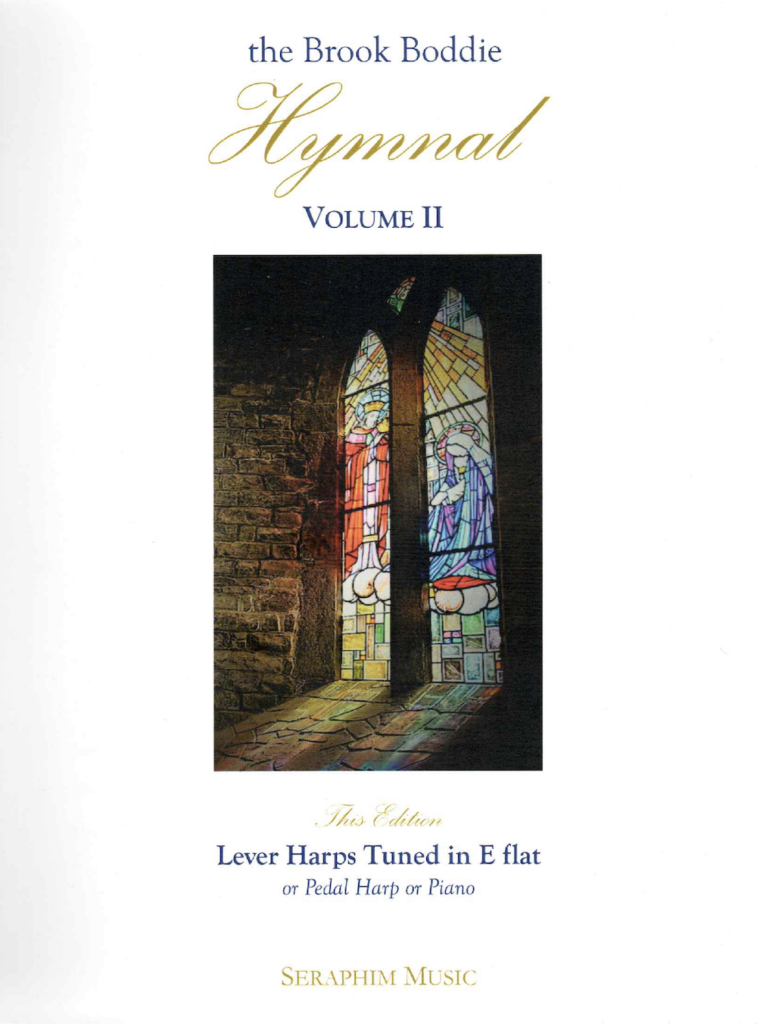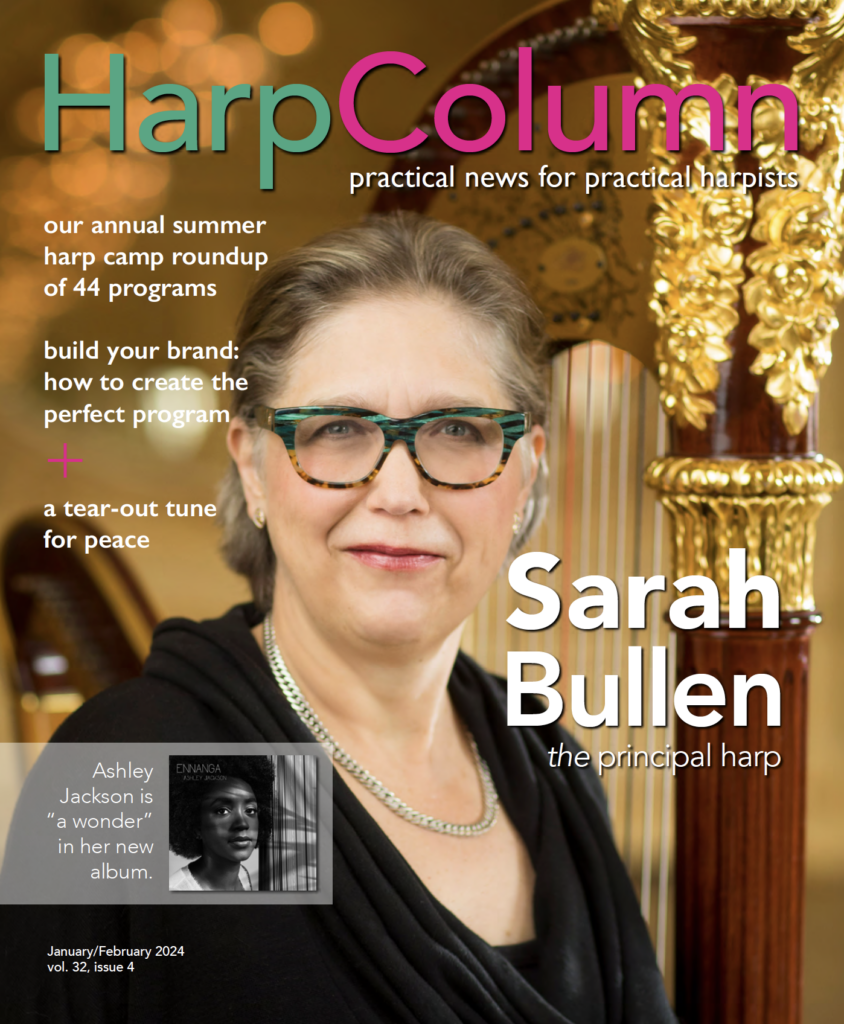


Kaffee Peck’s 55 Hymns for Harp include arrangements to be played as solos or accompaniment; Seraphim Music has published two volumes of hymn arrangements by the late Brook Boddie.
Harpists are always in demand for religious services throughout the year, so having a source for hymns—besides hymnals—is very helpful. There are some new publications that fill that need.
Kaffee Peck has arranged and published 55 Hymns for Harp. The arrangements are meant to be used not only as solos, but also as accompaniment for the congregation or with other musicians during worship services. Peck used six hymnals as references: The Presbyterian Hymnal, Lutheran Book of Worship, The National Baptist Hymnal, The Celebration Hymnal, The Methodist Hymnal, and the United Methodist Hymnal.
There are several versions of most hymns with the goal of giving the harpist the ability to select which version matches the hymnal being used. The differences between the versions may be very slight or simply in a different key, or they may contain different harmonies or meters.
Two tables of contents (chronological and alphabetical) help you determine at a glance the number of versions, the keys, and level of difficulty of each hymn. It might have been helpful to also include the appropriate hymnals in this listing although it is provided next to the title of each piece. Regardless, kudos to Dr. Peck for the arduous task of organizing this unique book.
Any piece that contains accidentals includes notation for both pedal and lever harp. Exceptions include “In the Garden” which has separate pedal and lever harp arrangements. There are also several hymns with A-flat versions and even one in D-flat. Those that have accidentals do not have lever changes notated, so they were evidently intended just for pedal harp. The A-flat tunes without any accidentals could still be played on lever harp, but would require re-tuning several strings, as Peck assumes E-flat tuning for the lever harp.
There is a pedal chart at the beginning of any piece that will require pedal changes. Pedal changes are below the staff, and lever changes are indicated by diamond-shaped notes on the staff.
There are a few minor errors. The G-flat lever marking in m. 12 of “This Is My Father’s World” on page 111 should be a B-flat. The D-natural pedal change in “All Things Bright and Beautiful” on page 73 is not necessary.
The music in the book becomes progressively more challenging, ranging from early to late intermediate. The most complex arrangement is “The Old Rugged Cross.” Many of the arrangements are quite simple and sight-readable. As the difficulty increases, the chord voicing gets more interesting. The easier arrangements feature a lot of stacked thirds as accompaniment in the lower range of the harp. These chord voicings tend to sound more elementary and can sound muddy on a very resonant harp. Still, these simple triads make the music accessible for playing with others. Harpists with more advanced improvisational skills or those playing these arrangements as solos (not as accompaniment) may want to embellish a little bit. No chord symbols are included. Fingering is suggested only occasionally on a few hymns. The typesetting is very easy to read. The music is available on Peck’s website, OrangeCountyHarp.com and Harp Column Music.
If you play for a lot of church services, this will be a handy book to have in your library.
Rhett Barnwell has published two volumes of hymn arrangements by Brook Boddie for lever or pedal harp or piano. Boddie was a harpist, organist, pianist, composer, and arranger who died unexpectedly a few years ago. His hymn arrangements and original compositions had become quite popular on YouTube. Thanks to Barnwell, The Brook Boddie Hymnal Volume I was released in 2020 and Volume II is the latest edition.
The books are available through Barnwell’s publishing enterprise, Seraphim Music, as well as most harp retailers. Each book is available in a spiral-bound print version, in PDF form, and separate versions for C tuning or E-flat tuning.
There are 16 tunes in Volume I and 15 in Volume II, all in Boddie’s appealing, mellow, meditative style. In addition to popular hymns and folk songs, Christmas carols, and some lesser-known spirituals, each volume contains a couple of original tunes by Boddie.
One of the trickiest things about playing instrumental arrangements without the lyrics in the body of the music is recognizing the difference between the melody line and harmony. Instrumentalists must bring out the melody and play as if singing to express the melody to the listeners. This is usually done in the music by putting the harmony in a different layer than the melody line with the melody stems up and the harmony stems down. Each layer should add up to the correct number of beats in the measure. There are a few places where this is not clear, such as in m. 12 of “Auld Lang Syne” (Vol. II). If you are familiar with the tune, this shouldn’t present a problem.
Only a few pieces have lever changes, and they are not too difficult. They are indicated by diamond-shaped notes. There are no pedal markings or fingering. Intermediate players can sight-read most of the music.
Boddie’s signature style keeps the left hand in almost continual motion in repeated patterns, almost to the point of monotony. Nevertheless, these arrangements make lovely, soothing solos, and the repetitive pattern doesn’t overwhelm.
The Brook Boddie Hymnal collections contain a wide variety of music that would be suitable for several occasions and settings. •







